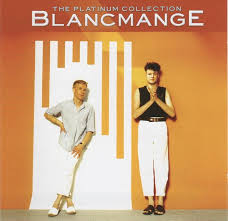Exploring the Charm of Blancmange: A Timeless Dessert

Introduction to Blancmange
Blancmange, a delicate dessert with a rich history, is becoming increasingly popular in contemporary cuisine. This sweet treat, traditionally made from milk, sugar, and a gelling agent like gelatin or cornstarch, is known for its creamy texture and elegant appearance. As culinary trends pivot towards classic dishes infused with modern twists, blancmange stands out as a versatile and appealing option for home cooks and professional chefs alike.
A Brief History
The origins of blancmange date back to the Middle Ages, with early recipes appearing across Europe, particularly in England and France. Initially, it was prepared as a savoury dish with chicken or fish and thickened with rice. Over the centuries, however, the recipe evolved into the sweet dessert we know today. The emergence of gelatin in the 19th century allowed for easier preparation and expanding variations, cementing blancmange’s place in dessert menus worldwide.
Current Trends and Innovations
In recent years, many chefs have begun to embrace and reinvent blancmange, incorporating unique flavours and ingredients. Popular variations include coconut blancmange, which adds a tropical twist, and matcha blancmange, appealing to tea enthusiasts. Additionally, creative presentations such as layering with fruit purées or edible flowers have made blancmange a visual highlight at dining establishments. During the COVID-19 pandemic, home baking surged in popularity, prompting many food enthusiasts to try their hand at making this classic dessert, often sharing their versions on social media platforms.
Nutritional Aspects
Blancmange can be a lighter dessert option when made with plant-based milks or reduced sugar alternatives, catering to dietary restrictions and health-conscious consumers. For those seeking gluten-free or dairy-free alternatives, substitutions such as almond milk or coconut cream can be used without compromising texture or flavour.
Conclusion and Future Outlook
As the culinary community continues to explore and experiment with traditional recipes, blancmange is poised to remain in the culinary spotlight. Its adaptability and timeless elegance make it a perfect candidate for both classic and modern menus. With growing interest in home cooking and nostalgic desserts, blancmange not only plays a significant role in past culinary traditions but also offers a glimpse into the future of dessert innovation. For readers and food enthusiasts, the allure of making and enjoying blancmange lies in its simplicity, versatility, and rich heritage, ensuring its place at the table for years to come.









